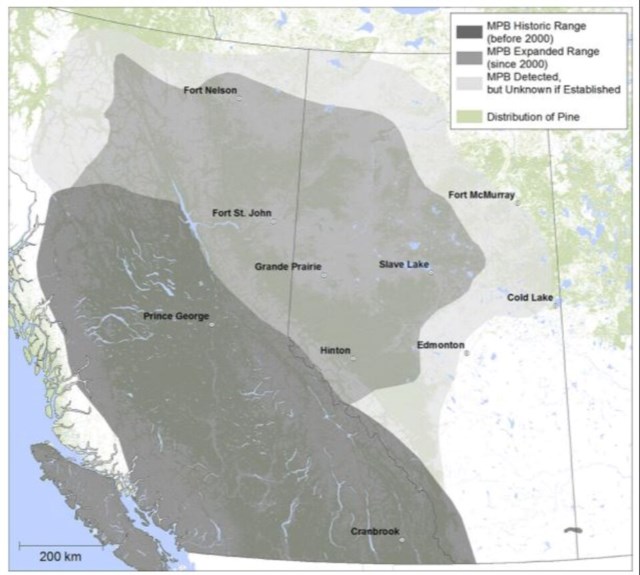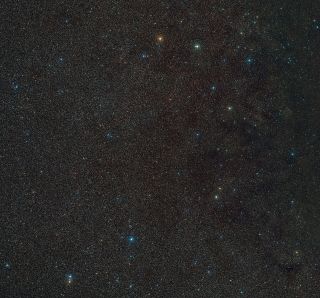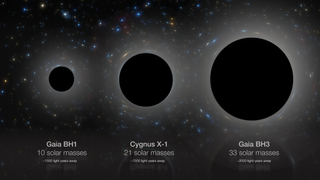Science
Riviera – News Content Hub – SpaceX launches second sixth-generation Inmarsat satellite – Riviera Maritime Media

Inmarsat’s latest I-6 F2 satellite was successfully launched on a Falcon 9 rocket from launch pad SLC-40 at Cape Canaveral Space Force Station in Florida, USA
This is the second sixth-generation satellite that has Global Xpress (GX) Ka-band and L-band payloads for enhanced broadband communications, the second string to Inmarsat’s Orchestra communications network and a twin of the I-6 F1 satellite, which was launched from Japan Q4 2021 and is scheduled to commence commercial operations later this year.
The Falcon 9 rocket placed I-6 F2 in temporary orbit, from which it will use onboard electric propulsion to reach its geostationary orbit 36,000 km above the Equator.
Inmarsat said I-6 F2 is scheduled to connect its first customers in 2024, following rigorous in-orbit technical testing.
Both satellites will provide a considerable upgrade to Inmarsat’s global coverage services for at least 15 years.
“Our I-6 programme has been six years in the making,” said Inmarsat chief executive Rajeev Suri. “This launch marked another milestone as we revolutionise global communications at scale.”
Inmarsat’s Orchestra is a global, multi-dimensional, dynamic mesh communications network that includes GX and L-band geostationary and low Earth orbit (LEO) satellites, long-term evolution connections in the North Sea and Gulf of Mexico and this year, Inmarsat will add coastal 4G and 5G coverage.
“Along with the I-6s, we will add five more advanced spacecraft to our fleet by 2025 as part of our fully funded technology roadmap,” said Mr Suri. “That will allow us to continue to meet our customers’ needs into the 2030s and beyond, while enabling new technologies for a smarter, more connected Earth.”
SpaceX also launched another Falcon 9 from Vandenberg Space Force Base, California, taking the number of LEO satellites for its Starlink constellation to 51.
Science
Pine beetles adapting to a changing climate, finds study – BC News – Castanet.net


Exposure to increased levels of carbon dioxide in the atmosphere accelerates the reproductive cycle of mountain pine beetles, a new study has found.
The findings, published in the journal Global Change Biology, show the beetle’s typical 40-day brooding period accelerated to 30 days when they were exposed to higher levels of carbon dioxide (CO2), the driving force behind human-caused climate change.
Rashaduz Zaman, lead author and a PhD candidate in forest biology and management at the University of Alberta, said the results show that as the climate changes, insects like the mountain pine beetle are adapting at a time trees are becoming more vulnerable to things like drought.
“The prediction is the beetle can bounce back and attack more,” Zaman said.
Since the early 1990s, the mountain pine beetle has attacked about 18 million hectares of forest, including half of the total volume of commercial lodgepole pine in British Columbia, according to Natural Resources Canada.
Warmer winters and drier summers allowed the beetle to extend well beyond its traditional range in the boreal forests of B.C. But it remained unclear how the beetle will be affected by climate change and the rising concentrations of ozone and carbon dioxide that come with it.
Beetles learned to adapt in a simulated future climate
Climate change has pushed CO2 concentrations past 421 parts per million, substantially higher than the pre-industrial level of 280 parts per million, and less than half the 1,000 parts per million that could be achieved at some point this century.
To simulate those conditions, the University of Alberta researchers introduced male and female pairs into freshly cut lodgepole pine logs, which were placed in a controlled climate chamber.
Next, they manipulated the environment by changing levels of CO2, ozone and relative humidity between 33 per cent and 66 per cent. The researchers also introduced three species of fungus that have a symbiotic relationship with the beetles. After a month or so, the logs were returned to ambient conditions to allow the beetles’ broods to emerge.


The researchers found the lower the humidity, the more the fungi grew and the more the beetles reproduced. High CO2 concentrations were also found to speed up the growth of larvae.
But when it came to ozone — another gas whose atmospheric concentration is expected to rise over the coming decades — increased concentrations were initially found to have a negative impact on mountain pine beetle reproduction and brood fitness. ?
?In the wild, a mountain pine beetle will attack a tree by making a hole in it. Once inside, it releases pheromones to attract other beetles, while releasing fungi that blocks a tree’s own toxic defences and inhibits arboreal mechanisms for transporting water and nutrients.
In the lab, the spike in ozone gas was originally found to degrade the pheromones beetles rely on for finding a mate. At first, it seemed the gas may have evened the odds and pushed back against the effects of CO2. But over the next three to four months, the following beetle generations started to adapt.
“When we tested the ozone, the first generation that came out, they were smaller and lower weight. By the third generation, they developed resistance,” said Zaman.
Expect more outbreaks
The results could have significant results for places like British Columbia, where mountain pine beetle infestations have already wiped out millions of hectares of forest in recent decades.
Zaman said climate modelling suggests more drought in B.C.’s future, something expected to weaken pine trees and make them more susceptible to infestation.
He said years of above-average wildfire may have helped halt the beetle’s advance, but over the long-term, Zaman and his colleagues forecast the mountain pine beetle will be able to adapt to a new forest regime and once again cause “significant ecological and economic consequences.”
“B.C. has been a hot spot for the pine beetle,” Zaman said. “We expect more outbreaks.”
If there’s any good news, the scientist said more studies still need to be done to confirm what they found.
Science
Record breaker! Milky Way's most monstrous stellar-mass black hole is sleeping giant lurking close to Earth (Video) – Space.com


The Milky Way has a big newfound black hole, and it lurks close to Earth! This sleeping giant was discovered with the European space telescope Gaia, which tracks the motion of billions of stars in our galaxy.
Stellar-mass black holes are created when a large star runs out of fuel and collapses. The new discovery is a landmark, representing the first time that a big black hole with such an origin has been found close to Earth.
The stellar-mass black hole, designated Gaia-BH3, is 33 times more massive than our sun. The previous most massive black hole of this class found in the Milky Way was a black hole in an X-ray binary in the Cygnus constellation (Cyg X-1), whose mass is estimated to be around 20 times that of the sun. The average stellar-mass black hole in the Milky Way is about 10 times heftier than the sun.
Gaia-BH3 is located just 2,000 light years from Earth, making it the second-closest black hole to our planet ever discovered. The closest black hole to Earth is Gaia-BH1 (also discovered by Gaia), which is 1,560 light-years away. Gaia-BH1 has a mass around 9.6 times that of the sun, making it considerably smaller than this newly discovered black hole.
“Finding Gaia BH3 is like the moment in the film ‘The Matrix’ where Neo starts to ‘see’ the matrix,” George Seabrook, a scientist at Mullard Space Science Laboratory at University College London and a member of Gaia’s Black Hole Task Force, said in a statement sent to Space.com. “In our case, ‘the matrix’ is our galaxy’s population of dormant stellar black holes, which were hidden from us before Gaia detected them.”
Seabroke added that Gaia BH3 is an important clue to this population, because it is the most massive stellar black hole found in our galaxy.
Of course, Gaia-BH3 is a small fry compared to the supermassive black hole that dominates the heart of the Milky Way, Sagittarius A* (Sgr A*), which has a mass 4.2 million times that of the sun. Supermassive black holes like Sgr A* aren’t created by the deaths of massive stars but rather by mergers of progressively larger and larger black holes.
Sleeping giant black hole caused stellar companion to throw a wobbly
All black holes are marked by an outer boundary called an event horizon, at which point the black hole’s escape velocity exceeds the speed of light. That means an event horizon is a one-way light-trapping surface beyond which no information can escape.
As a result, black holes don’t emit or reflect light, meaning they can only be “seen” when they are surrounded by material that they gradually feed on. Sometimes, this means a black hole in a binary system pulling material from a companion star, which forms a disk of gas and dust around it.
The tremendous gravitational influence of black holes generates intense tidal forces in this surrounding matter, causing it to glow brightly with material that is destroyed and consumed, also emitting X-rays. Additionally, the material the black hole doesn’t feast on can be channeled to its poles and blasted out as near-light speed jets, which are accompanied by the emission of light.
All of these light emissions can allow astronomers to spot black holes. The question is, how can “dormant” black holes that aren’t feeding on gas and dust around them be detected? For instance, what if a stellar-mass black hole has a companion star, but the two are too widely separated for the black hole to snatch stellar matter from its binary partner?
In cases like this, the black hole and its companion star orbit a point that represents the system’s center of mass. This is also the case when a star is orbited by a light companion, such as another star or even a planet.
Orbiting the center of mass results in a wobble in the motion of the star, which is visible to astronomers. Because Gaia is adept at precisely measuring the motion of stars, it is the ideal instrument to see this wobble.
Gaia’s Black Hole Task Force set about looking for odd wobbles that couldn’t be accounted for by the presence of another star or a planet and that indicated a heavier companion, possibly a black hole.


Homing in on an old giant star in the constellation Aquila, located 1,926 light-years from Earth, the team found a wobble in the star’s path. That wobble suggests that the star is locked in orbital motion with a dormant black hole of exceptionally high mass. The two are separated by a distance that ranges from the distance between the sun and Neptune at their widest and our star and Jupiter at their closest.
“It’s a real unicorn,” lead researcher Pasquale Panuzzo of CNRS, Observatoire de Paris in France, said in a statement. “This is the kind of discovery you make once in your research life. So far, black holes this big have only ever been detected in distant galaxies by the LIGO-Virgo-KAGRA collaboration, thanks to observations of gravitational waves.”
Related: What are gravitational waves?


Thanks to the sensitivity of Gaia, the Black Hole Task Force was also able to put constraints on the mass of Gaia-BH3, finding it to possess 33 solar masses.
“Gaia-BH3 is the very first black hole for which we could measure the mass so accurately,” said Tsevi Mazeh, a scientist and Gaia collaboration member at Tel Aviv University. “At 30 times that of our sun, the object’s mass is typical of the estimates we have for the masses of the very distant black holes observed by gravitational wave experiments. Gaia’s measurements provide the first undisputable proof that [stellar-mass] black holes this heavy do exist.”
RELATED STORIES:
However, the Gaia-BH3 system is bound to be of great interest to scientists for more than just its proximity to Earth and the mass of its black hole.
The star in this system is a sub-giant star that is around five times as large as the sun with 15 times its brightness, though it is cooler and less dense than our star. The Gaia-BH3 companion star is mainly composed of hydrogen and helium, the universe’s two lightest elements, lacking heavier elements, which astronomers (somewhat confusingly) call “metals.”
The fact that this star is “metal-poor” suggests that the star that collapsed and died to create Gaia-BH3 also lacked heavier elements. Metal-poor stars are expected to shed more mass than their more metal-rich counterparts during their lives, so scientists have questioned if they can maintain enough mass to birth black holes. Gaia-BH3 represents the first hint that metal-poor stars can indeed do so.
“Gaia’s next data release is expected to contain many more, which should help us to ‘see’ more of ‘the matrix’ and to understand how dormant stellar black holes form,” Seabroke concluded.
The team’s research was published today (April 16) in the journal Astronomy & Astrophysics.
Science
Nasa confirms metal chunk that crashed into Florida home was space junk


|
|
A heavy chunk of metal that crashed through the roof of a Florida home is, in fact, space junk, Nasa has confirmed.
The federal space agency said that a cylinder slab that tore through a house in Naples, Florida, last month was debris from a cargo pallet released from the international space station in 2021, according to a Nasa blogpost.
The determination was made after the agency collected the debris from the Florida home and analyzed it at the Kennedy Space Center.
“Based on the examination, the agency determined the debris to be a stanchion from the Nasa flight support equipment used to mount the batteries on the cargo pallet,” the agency said.
The pallet, which contained ageing nickel hydride batteries, was released after new lithium-ion batteries were installed in the space station.
The debris was supposed to be destroyed in the Earth’s atmosphere. Instead, a piece of metal crashed through a Florida home, NBC News reported.
The debris weighs 1.6lb and measures about 4in by 1.6in.
Homeowner Alejandro Otero described the experience to WINK News, which first reported the story.
“It was a tremendous sound. It almost hit my son. He was two rooms over and heard it all,” Otero said to WINK.
“Something ripped through the house and then made a big hole on the floor and on the ceiling.”
The scientific journal Ars Technica previously speculated that the metal was probably space station debris. Nasa finally confirmed the origin of the chunk on Monday.
The space agency added that it would investigate how the debris managed to survive its re-entry into Earth’s atmosphere and “update modeling and analysis”.
It is unclear if Nasa will cover the cost of damages to Otero’s home.
In comments posted to X shortly after the incident, Otero said that Nasa had not responded to messages he left with the agency.





-



 Sports23 hours ago
Sports23 hours agoTeam Canada’s Olympics looks designed by Lululemon
-
News24 hours ago
Richard Chevolleau Short Film “Marvelous Marvin” Set to go to Camera
-



 Tech15 hours ago
Tech15 hours agoiPhone 15 Pro Desperado Mafia model launched at over ₹6.5 lakh- All details about this luxury iPhone from Caviar – HT Tech
-
Business22 hours ago
Firefighters battle wildfire near Edson, Alta., after natural gas line rupture – CBC.ca
-



 Sports15 hours ago
Sports15 hours agoLululemon unveils Canada's official Olympic kit for the Paris games – National Post
-



 Investment23 hours ago
Investment23 hours agoWall Street bosses cheer investment banking gains but stay cautious
-



 Sports24 hours ago
Sports24 hours agoCelebrini tops Central Scouting North American ranking for 2024 NHL Draft
-



 Politics20 hours ago
Politics20 hours agoTrump gave MAGA politicians permission to move left on abortion. Some are taking it. – Semafor





